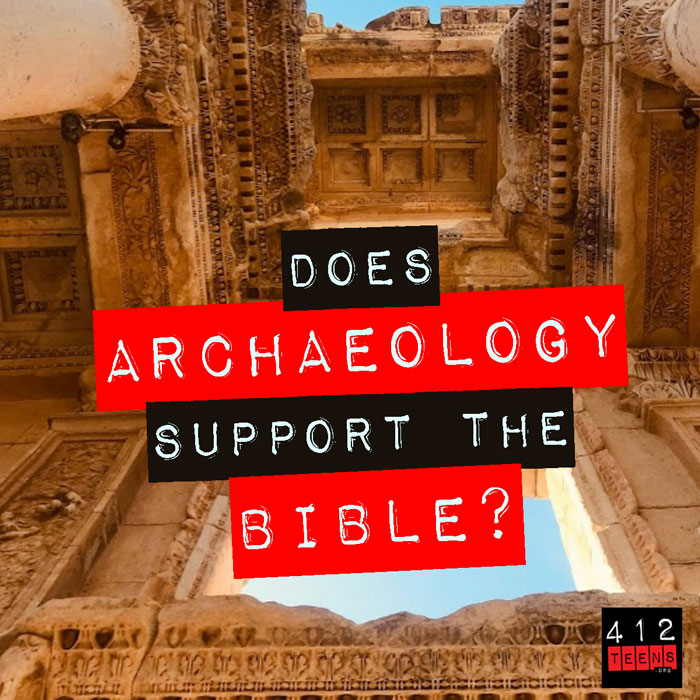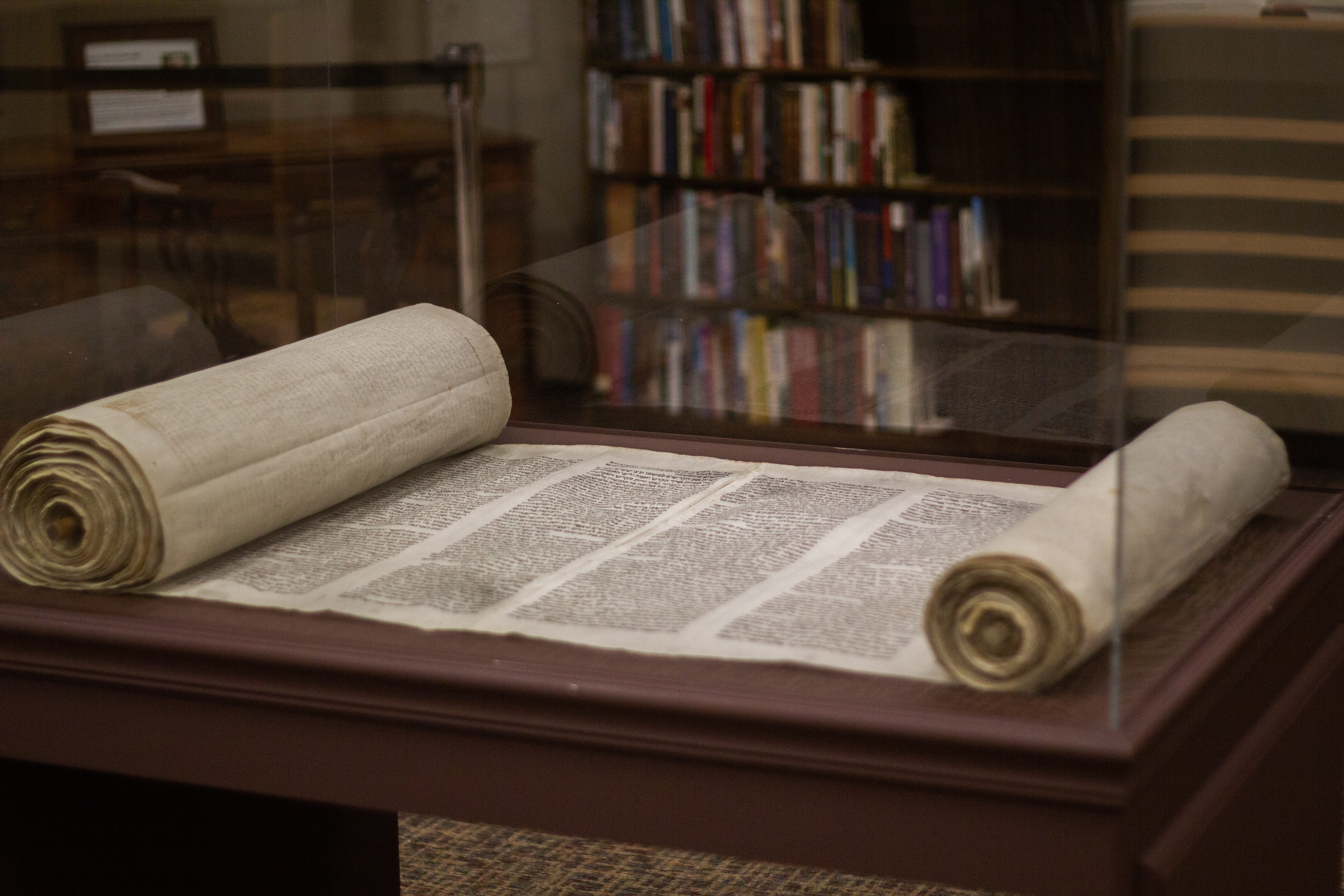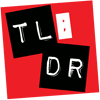Does archaeology support the Bible?

Archaeology is the study of ancient cultures through recovering physical artifacts from the past. Every discovery that is made is like a clue or a puzzle piece that helps us understand the way things were before our time. As you put these clues or puzzle pieces together, you get a fuller picture of a different time, culture, and place. You get to take a step back into history and gain an understanding of what it was like to live in that culture or to see their perspective on historical events.
Biblical (or Christian) archaeology is the science of recovering and investigating past cultures that have impacted Christianity and Judaism, as well as helping us understand cultural Christianity and Judaism throughout history. The goal of biblical archaeology is to verify the essential truths of the Bible through physical artifacts that have been left behind. This could include the study of architecture, language, literature, art, tools, pottery, or many other items that have survived to this day.
What's the purpose of biblical archaeology?
Biblical archaeology serves a few purposes: to help us discover, validate, and understand.
- To discover new things about the past.
- To validate what we already know about the past from biblical accounts, which confirms biblical facts. Many archaeological discoveries have verified events and key figures in the Bible.
- To better understand the manner and customs of people living during Bible times. Biblical archaeology helps us to know what everyday life was like during the Old and New Testament, as well as understand the cultural context in which the Scriptures were written.
Sometimes archaeological evidence is called "extra-biblical" testimony because it is evidence outside the Bible that proves the Bible is true.
Important Biblical Archaeology Discoveries
Some of the important biblical archeological discoveries include the Dead Sea Scrolls, the Tel Dan Inscription, Caiaphas' Ossuary, the Crucified Man, the Ketef Hinnom Amulets, the House of God Ostracon, and the Pilate Inscription. Below is a summary of a few of them.
The Dead Sea Scrolls
The Dead Sea Scrolls were so named because they were discovered in caves surrounding the Dead Sea in 1947. Among these scrolls were fragments of every book of the Old Testament (except Esther), commentaries on Old Testament books, a complete copy of the book of Isaiah, and copies of other Jewish texts.
Of importance is the fact that these copies of the Old Testament predate 100 AD, and when they are compared to our Bible today, the text is virtually the same. This proves that the Bible has been accurately preserved over thousands of years. We can have confidence that, even though we do not have the original physical books of the Old Testament, God has preserved His Word for us through the centuries. We can now be certain that the original message He gave long ago to the original authors is the same message we can read today.

Tel Dan Inscription
The Tel Dan Inscription is a stone tablet that contains an inscription referring to the Davidic dynasty. This was the first, and so far, only, outside reference to King David that has been discovered. Before this discovery, skeptics thought that David might be a made up king or myth—like King Arthur.
However, this extra-biblical find proved the skeptics wrong and the Bible right. The tablet was erected by Hazael, king of Aram (present day Syria), and dates to the 9th century BC. The inscription refers to a military victory that corresponds to the biblical account found in 2 Chronicles 22. It affirms the historical existence of King David as well as confirming the dates of the House of David.
Significant New Testament Archaeological Discoveries
Caiaphas' Ossuary
An ossuary is like an ancient casket, and one bearing the inscription "Yeosef bar Qafa" has been unearthed. This inscription is saying that the bones in this coffin belong to Yeosef (Joseph) the son of Caiaphas. This man was the Jewish high priest that presided over Jesus' trial before His crucifixion (Matthew 26:57-67). So the discovery of a coffin dating around the time of the second temple period is proof that Caiaphas existed around the time of Jesus, confirming the biblical account. (Learn more about this discovery.)
Pontius Pilate's Tablet
A similar proof for another historical figure is a stone tablet inscribed with the name Pontius Pilate to honor Emperor Tiberius that was found in Caesarea on the Mediterranean coast. The inscription confirms Pontius Pilate as a governor in Judea from 26/27 to 36/37 AD. Like David, skeptics have at times, doubted the existence of Pilate and sought to discredit the biblical narrative as historical fact. But this inscription clearly mentions Pilate as the Prefect of Judea verifying that he did live and rule during the time of Jesus. (Learn more about this discovery.)
The Crucified Man
The Crucified Man is the remains of a full skeleton of a man crucified in the first century. A bone box was found in 1968 in a burial cave in Western Jerusalem that contained a heel bone pierced with a metal nail. This discovery confirms the Roman crucifixion method during the first century, disproving the objection that this type of treatment was invented by the disciples as part of an elaborate martyr story about Jesus. (Learn more about this discovery.)
Evidence of a Battle
"About this time Hazael king of Aram went up and attacked Gath and captured it. Then he turned to attack Jerusalem." —2 Kings 12:17 (NIV)
Due to new technologies, archeologists were able to evaluate this battle site in ancient Gath in 2023. They applied the novel research method of thermal demagnetization on excavated bricks in Gath. Originally, certain scholars believed the bricks had been pre-fired before constructing the buildings—even though this would have been an unusual brick-making method. But the new study using thermal demagnetization concluded that "the city had indeed been burned down, as the bricks showed evidence of firing temperatures compatible with conflagration rather than a kiln"1.
The Quest Continues
Archaeology is continually providing a window into the past so we can better understand what the Bible has recorded about real events and real people. While the research into the Battle of Gath is new to us, there will be a day when this discovery will seem as old as the Dead Sea Scroll discovery of 1947. As time goes on, more discoveries will prove that the Bible is an accurate account of the past or help us understand the context of Scripture in a deeper way.
While there are some biblical accounts that lack archeological evidence (due to it being lost or yet to be discovered), archaeology has never proved the Bible wrong. Rather, time and time again, the evidence discovered confirms the Old and New Testament or sheds light on the past to help us understand it better.
RESOURCES: 1. Ham, Ken. "Archaeological Research Confirms a Biblical Account in 2 Kings." Answers in Genesis, Answers In Genesis, 18 Jan. 2024, https://answersingenesis.org/archaeology/archaeological-research-confirms-biblical-account/. Accessed 27 Jan. 2024.
ALSO SEE:


TL;DR
Archaeology is the study of ancient cultures through recovering physical artifacts from the past. Biblical (or Christian) archaeology is the science of recovering and investigating past cultures that have impacted Christianity and Judaism, as well as helping us understand cultural Christianity and Judaism throughout history. The goal of biblical archaeology is to verify the essential truths of the Bible through artifacts that have been left behind. This could include the study of architecture, language, literature, art, tools, pottery or many other items that have survived to this day. Time and time again, archaeological evidence such as manuscripts, tablets, inscriptions, bones, and structures have confirmed the existence of people, customs, texts, locations, or events recorded in the Bible.

Writer: Hanna S.
Hanna loves spending time with kids and teens. She enjoys being detectives with them to investigate God's Word to discover truths to answer any questions. She is the co-author of a newly published apologetics curriculum for children and teaches one online for highschoolers-adults. To learn more about her ministry you can visit networkerstec.com. For fun, she likes to play Ultimate Frisbee, read historical fiction, and paint.
